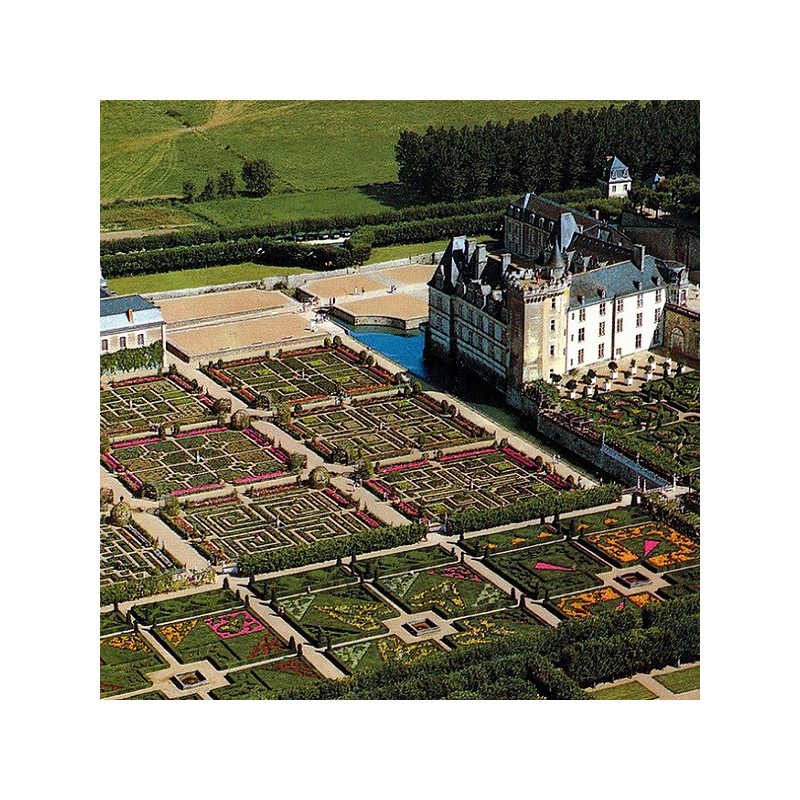- New









The castle of Villandry interweaves architectural styles from the Middle Ages to the eighteenth century through the Renaissance and botanical splendors with exceptional gardens recomposed. Discover castle and gardens by booking your tickets now.
 Safety guarantees
Safety guarantees
This site and its pages are secured using SSL protocol.
 Shipping policy
Shipping policy
On-time delivery or 100% refund guaranteed
 Returns policy
Returns policy
All offers are excluded from the right of withdrawal. No returns, no exchanges.
The castle of Villandry interweaves architectural styles from the Middle Ages to the eighteenth century through the Renaissance and botanical splendors with exceptional gardens recomposed.
Opening hours of Villandry Castle
Tickets for the castle and gardens are valid for the season from the beginning of April to the end of October for a whole day. Outside this season, tickets can be picked up locally.
Opening 9:00 am and closing of the castle at 18:00 and gardens of 19:00
Duration of the visit: about 2 hours
Ticket price for the visit of Château de Villandry
The discounted child rate for Villandry applies to young people from 8 to 18 years of age as well as students under 26 years of age under proof of proof.
Audioguide available in several languages for 4 €.
Electronic tickets - sending tickets to Castle Villandry by e-mail after receipt of payment
Formerly known as Coulombiers until modern times, the Domaine de Villandry is in the Middle Ages a castellany dependent on the castle of Tours. We find the medieval keep which rises above the moat and which was the heart of the original fortress. This one is also typical of the fortifications which strew at the time of the first crusades a west of France in the heart of the possessions of the Plantagenets attached to the kingdom of France. Anjou and Touraine, belonging to powerful lords, are also on the passage between the Normandy of Richard the Lionheart and the Guyenne of his mother Aliénor of Aquitaine.
And it was at the castle of Villandry that took place the Peace of Colombiers during which Henry II of Plantagenet, King of England and father of Richard I, bowed to Philip Augustus.
Military advances, hygiene standards and aesthetic expectations evolving towards the Renaissance will radically change the appearance of the fortress and make it a castle with more luxurious bells and richer ornaments.
The spendlid gardens of Château de Villandry are modern recompositions of typical Renaissance gardens, made from planks and arranged on four levels of terraces spanning six hectares.
Between Amboise and Blois stands the castle of Chaumont with his estate on the banks of the Loire. This middle-aged fortress was later acquired by Queen Catherine de Medici who forced the favorite of the late King Henry II Diane of Poitiers to exchange the castle of Chenonceau against this area of Chaumont, rich in vineyards.
Jewel of the chateaux of the Loire, Chambord was designed for the pleasure of the great King Francis I and became the symbol of the Renaissance.
The royal city of Loches brings together the main historical monuments of the city with the medieval dungeon of Loches, built at the beginning of the XIth century and which served as royal prison with the famous "girls" of Louis XI, as well as the royal lodging dominating the valley of the Indre.
Favorite residence of the kings in the Renaissance, the last of the Valois summoned the States-General there twice. The castle of Blois mixes architectural styles, from Gothic to classicism. Blois is best known for its monumental staircase, its galleries, its Louis XII wing and the equestrian statue.
Azay-le-Rideau is one of the most beautiful castle in the region. Its interior as well as its moats and gardens are a feast for the visitor's eyes.
Book your tickets.
The Clos-Lucé is the last home of Leonardo da Vinci. A few yards from the royal castle of Amboise lived the greatest genius of all time. Visit the Clos-Lucé and its reconstructions of Leonardo da Vinci's machines.
Built in the Renaissance and become the home of Diane de Poitiers, the castle of Chenonceau is one of the most beautiful castles of the Loire, if not the most beautiful. Visit Chenonceau Castle, its French gardens and the Wax Museum and enjoy the unique atmosphere of this building controlling the Cher.

The castle of Villandry interweaves architectural styles from the Middle Ages to the eighteenth century through the Renaissance and botanical splendors with exceptional gardens recomposed. Discover castle and gardens by booking your tickets now.
